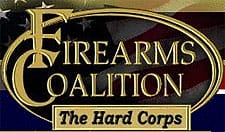Reading and Rating Congressional Gun Votes
By Chris Knox

Manassas, Virginia – -(AmmoLand.com)- As we reported in our bi-monthly newsletter, The Knox Hard Corps Report, voting records, especially those for final passage, don’t tell the full story of where our elected servants stand on a particular issue. And the fact is that those servants occasionally take pains to conceal their true position from the people who sent them to office.
This year’s poster boy for obfuscated voting is Senator Mark Pryor a second-term Democrat from Arkansas.
In the July Senate vote for nationwide concealed-carry reciprocity, Pryor first voted against the measure but then, when Republicans Lugar of Indiana and Voinovich of Ohio cast their votes against their party line, he changed his vote to a nominally pro-gun vote.
Pryor’s changed vote gives the Democrats twenty allegedly pro-gun vote that they can point to when the inevitable charges come that the Democratic Party is the anti-gun party. It also gave them a pair of anti-gun Republican votes they can point to when Republicans try to claim a pro-gun mantle. In other words, it keeps the whole issue foggy and enables politicians to come down firmly on whichever side of the fence seems most advantageous at the time. I don’t know, but I would bet that had another Republican defected, another Democrat would have seen the light and voted for passage.
Muddy or downright misleading votes are a tradition as old as public deliberation itself. My father, Neal Knox, focused much of his reporting on the play-by-play of such votes, particularly on the seemingly minor procedural and committee votes, for that’s where the legislation that eventually makes headlines is formed. One column that I included in Neal Knox – The Gun Rights War, the recently released compilation of his writing, was especially instructive. The piece is from October of 1984 and is titled “How To Read A Congressional Vote.”
The vote in the 1984 column was a procedural vote on whether to consider the McClure-Volkmer Firearms Owners Protection Act as an amendment to a massive must-pass appropriations bill. The procedural vote passed 63-31. Focusing on the 31 Nay votes against accepting the amendment for consideration, he found that eight of the Senators routinely opposed any “non-germane” amendments to appropriations bills. He set those votes aside since they were principled votes and had history to back it up.
The remaining 23 votes were another matter. Those senators had voted to consider another similarly “non-germane” amendment which they wanted to pass, but they voted against the pro-gun McClure-Volkmer bill which they did not want to pass. Yet a couple of days later, half a dozen of the senators (among them now-Vice-President Joe Biden) voted for the McClure-Volkmer bill on a meaningless reconsideration vote. Even more misleading, at least three of these same senators had co-sponsored McClure-Volkmer in its standalone form.
In fact, co-sponsoring legislation is not a sure sign of support. Throughout most of the fight over McClure-Volkmer it had the co-sponsorship of a majority of the Senate, yet the bill stayed bottled up in committee. When Neal Knox started to press the Republican leadership to get the bill to the floor, he ran straight into a brick wall of opposition. That’s another story, but it’s also included in the book, by the way.
In addition to the late-changing vote and the all-important procedural and committee votes, there are other ways that a member of Congress can leave a record that he hopes will be more palatable than the positions he actually holds. One is “taking a powder” – literally not showing up for a vote, or voting Present which is a non-vote. Both John McCain and Barack Obama caught flak as senators for either failing to show up or for voting Present. But they were able to avoid hard votes that way.
Another game politicians play is to “pair” a vote with someone across the aisle, agreeing to cross-cancel each other. Such pairings are often orchestrated by the leadership to give cover to vulnerable party members and can give the appearance of a closely divided Congress where in reality the deal was in the bag long before the quorum call went out.
The brutal fact is that most elected servants, like any other salesman, will show you the face and the record they think you want to see. Citizens can counteract the obfuscation with careful scrutiny. Knowing how to decipher the record – read Neal Knox – The Gun Rights War – and reporting what you discover – by posting questions, answers, and discussion on GunVoter.org – shines light on the shenanigans and serves as a force multiplier in the gun rights war.
About:
The Firearms Coalition is a loose-knit coalition of individual Second Amendment activists, clubs and civil rights organizations. Founded by Neal Knox in 1984, the organization provides support to grassroots activists in the form of education, analysis of current issues, and with a historical perspective of the gun rights movement. Visit: www.firearmscoalition.org
